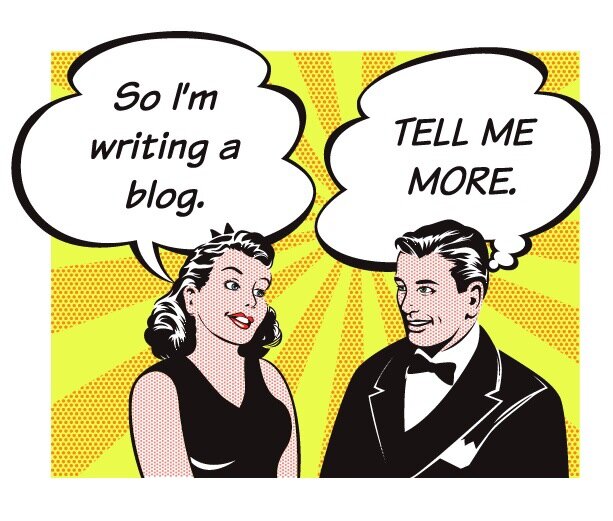6 Tips For Growing An Online Audience
This post was written by Jason Nellis of Overachiever Media. You can read more of his posts on his , or connect with him on Twitter at /.
Let’s face it – we all love more attention. Whether you’re a blogger looking for a bigger audience, a business developing your customer base, or a creative who wants to attract more attention to your work, you know you want eyeballs on your content. But getting more of an audience isn’t just a numbers game – it’s vital to have a strategy in place that focuses on audience engagement as well.
Rather than trying to forge a brand-new path to brand growth, use these tips as a starting place to creating a strategy that helps you add interested people to your audience while still consistently engaging your current fans.
1. Consistent Programming is Key
You can’t create content and post it haphazardly. Readers of a blog can’t be depended on to just discover that a new post has been delivered to them; if they don’t know when to expect the next one, they’ll lose interest quickly.
Instead, pick a consistent schedule you know you can keep and commit to it, even if it starts off slower than you want (say, posting new content every two weeks, when you really want to post something new every day). Sticking to a plan (and being transparent about it with your audience) forms an understanding with your audience that lets them know that they can trust you.
2. Treat Your Audience Like People
It’s really easy to imagine a group of people you want to target with your content, but what about a single person? Or even better, what about a specific person you know?
When developing content, we tend to think of the people we’re creating for in the broadest of terms. Instead, try creating as though you’re talking to individual people. Over time, you’ll find that you’ll not only tailor your content more effectively, but you’ll likely get stronger, more useful responses from your audience (who will appreciate the effort).
3. Practice Makes Perfect
If you’ve ever heard someone pick up an instrument for the first time and try it, you know how bad it can be to try something new. It’s especially difficult for those who are creating something that’s intended to be public, like a newsletter or pieces of art, and at the first sign of “failure,” you’re likely to want to pack up and go home.
But the old saying is true: practice really does make perfect. Since beginning the blog for Overachiever Media several months ago, my writing has improved dramatically (yes, it was even worse than it is now!). You will see similar results, both with your audience size and your audience engagement, if you keep working on your content.
4. Pick Only The Platforms You Care About; Ignore the Rest
One common mistake people make is trying to be something to everyone. They think that, because there might an audience on all platforms, that they should commit to creating those platforms and using them all at the same time. Nothing could be further from the truth; if even you’re a brand looking to engage customers with a huge budget, you don’t necessarily want to be on every platform (for example, a funeral home probably shouldn’t be on SnapChat). This is even truer with small companies or individual entrepreneurs.
Rather than bite off more than you can chew, pick two or three platforms to use, tops. Twitter is an easy place to start, as is Facebook (though with the recent changes to their news feed, its long term value for organic reach is debatable). Maybe throw in something more multimedia-based (Instagram? Pinterest? YouTube?), depending on your needs, and you’ve got plenty to start with.
5. Something is Better Than Nothing
When I was younger, I tried going to the gym without any real understanding of how I should be working out. After a few months of trying it on my own, I got frustrated and gave up. It wasn’t until I started working out with a friend that I realized that, even though I probably hadn’t been getting the most out of my work outs, I’d actually accomplished quite a bit on my own.
The point of the story is, of course, that by virtue of going to the gym and at least trying, I was way ahead of myself than when I’d just been sitting on the couch. Online media is no different – you don’t have to be a superstar right out of the gate. You just have to be willing to do the work at the beginning.
6. The Only Definition of Failure is Giving Up
Most people think the definition of “failure” is not succeeding. This isn’t true – success has so many different meanings and interpretation that settling on a single, unifying benchmark is almost impossible (Is it gaining an audience? Making money? A featured post on Mashable?). But failure is easy to define; it’s when you decide to throw in the towel.
Years ago, I read a book by Jules Pfeiffer called The Man in the Ceiling. In it, a boy who loves illustrating hits a wall when he realizes that he can’t draw hands well. He talks to his uncle, a recently successful Broadway musical composer, who offers the following advice: every failure is a piece of future luck. The more you “fail,” the closer you get to success.
Don’t get discouraged when you don’t take off like a rocket with your first Vine video or email newsletter. Even though it may not seem like it at first, you’re on your way to getting the audience you want.

Image source: http://kingdesignllc.com/blog/blogging-101

